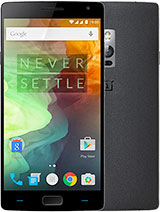OnePlus 3 64 GB Prices
Important Note.
- All prices are in Pakistani Rupee (PKR)
- Prices may vary at stores and our effort will be to provide you with the updated prices.
- The latest price of OnePlus 3 64 GB was obtained on 17 مئی, 2019. The prices at the original stores had been updated on the respective mentioned dates.
- Find out WhatMobile price has dropped in Pakistan by selecting Notify Price Drop button
- Find out WhatMobile has better specifications by clicking Add To Compare Button find out what Mobile has better reviews by visiting our reviews section
- Find out WhatMobile is cheaper on which retailer by clicking Compare prices from retailers button
Search Terms
- OnePlus 3 64 GB
Specifications
| GENERAL | |
| 2G Network | GSM 850 / 900 / 1800 / 1900 - SIM 1 & SIM 2 |
|---|---|
| 3G Network | HSDPA 850 / 900 / 1700(AWS) / 1900 / 2100 - North America HSDPA 850 / 900 / 1900 / 2100 - Global model |
| 4G Network | LTE band 1(2100), 2(1900), 4(1700/2100), 5(850), 7(2600), 8(900), 12(700), 17(700) - North America LTE band 1(2100), 3(1800), 5(850), 7(2600), 8(900), 20(800), 38(2600), 40(2300), 41(2500) - Global model |
| Sim | Dual SIM (Nano-SIM, dual stand-by) |
| Announced | 23/06/2017 |
| Status | Discontinued |
| BODY | |
| Dimensions | 152.7 x 74.7 x 7.4 mm (6.01 x 2.94 x 0.29 in) |
| Weight | 158 g (5.57 oz) |
| DISPLAY | |
| Display Size | 5.5 inches, 83.4 cm2 (~73.1% screen-to-body ratio) |
| Resolution | 1080 x 1920 pixels, 16:9 ratio (~401 ppi density) |
| MultiTouch | Yes |
| Protection | Corning Gorilla Glass 4 - Oxygen OS 5.0 |
| SOUND | |
| AlertTypes | Vibration; MP3, WAV ringtones |
| LoudSpeaker | Yes |
| 3.5mm jack | Yes - Active noise cancellation with dedicated mic |
| MEMORY | |
| CardSlot | No |
| Internal | 64 GB, 6 GB RAM |
| DATA | |
| GPRS | Yes |
| EDGE | Yes |
| Speed | HSPA 42.2/5.76 Mbps, LTE Cat9 450/50 Mbps |
| WLAN | Wi-Fi 802.11 a/b/g/n/ac, Wi-Fi Direct, DLNA, hotspot |
| Blue Tooth | 4.2, A2DP, LE, aptX HD |
| NFC | Yes |
| USB | 2.0, Type-C 1.0 reversible connector |
| CAMERA | |
| Camera Primary | 16 MP (f/2.0, 1/2.8", 1.12 µm), phase detection autofocus, OIS, LED flash |
| Camera Features | Geo-tagging, touch focus, face detection, panorama, HDR |
| CameraVideo | 2160p@30fps, 1080p@30/60fps, 720p@120fps, Auto HDR |
| CameraSecondary | 8 MP (f/2.0, 1/3.2", 1.4 µm), 1080p |
| FEATURES | |
| Processor Cores | Quad-Core |
| OS | Android 6.0.1 (Marshmallow), upgradable to Android 8.0 (Oreo) |
| CPU | Quad-core (2x2.15 GHz Kryo & 2x1.6 GHz Kryo) |
| Sensors | Fingerprint (front-mounted), accelerometer, gyro, proximity, compass |
| Messaging | SMS (threaded view), MMS, Email, IM, Push Email |
| Browser | HTML5 |
| Radio | No |
| GPS | Yes, with A-GPS, GLONASS, BDS |
| Java | No |
| Colors | Graphite, soft gold |
| Others | - Fast battery charging (Dash Charge) - DivX/Xvid/MP4/H.265 player - MP3/eAAC+/WMA/WAV/FLAC player - Document viewer - Photo/video editor |
| BATTERY | |
| Battery | Non-removable Li-Ion 3000 mAh battery |
| MISC | |
| SAREU | 0.39 W/kg (head) 0.32 W/kg (body) |
Reviews

In not a very long time at all, OnePlus has gone from being an start-up outsider to one of the most well known brands in the Android kingdom. OnePlus went about this is a very impressive manner, too, doing things its own way and not spending that much cash on marketing — nothing actually when compared to the likes of Samsung and Apple. The OnePlus One started everything.
But it wasn’t until this week that OnePlus joined the big leagues. The OnePlus 3 is a very impressive handset. It looks amazing, features bleeding edge technology and hardware, and costs around £100 less than most of its peers. No one else is delivering this kind of value in the mobile space at present (save for Xiaomi, of course) and this is part of the reason behind OnePlus’ unparalleled rise to where it is today.
And best of all THIS OnePlus release will not be done under invitation; no, this handset will be available direct from OnePlus with ZERO need for a formal invite. All you need is a computer and £309 and the OnePlus 3 can be yours RIGHT THIS SECOND.
So, how does it compare to last year’s OnePlus 2? Let’s take a look shall we…
OnePlus 3 vs OnePlus 2: Specs
OnePlus 2
Dimensions: 151.8 x 74.9 x 9.9 mm, 175g
Display: 5.5in LTPS IPS LCD 1080 x 1920 pixels (~401 ppi pixel density)
OS: Android Lollipop (Upgrades To Android Marshmallow) + Oxygen OS UI
Chipset: Qualcomm MSM8994 Snapdragon 810
Memory: 3/4GB
Storage Options: 16GB/64GB
SD-Support: No
Primary Camera: 13 MP, f/2.0, OIS, laser autofocus, dual-LED flash, 1/2.6" sensor size, 1.3 µm pixel size Secondary Camera: 5MP, f/2.4
Battery: Non-removable Li-Po 3300 mAh battery
OnePlus 3
Dimensions: 152.7 x 74.7 x 7.4 mm, 158g
Display: 5.5in Super AMOLED 1080 x 1920 pixels (~401 ppi pixel density)
OS: Android Marshmallow + Oxygen OS UI
Chipset: Qualcomm MSM8996 Snapdragon 820
Memory: 6GB
Storage Options: 64GB
SD-Support: No
Primary Camera: 16MP, f/2.0, OIS, phase detection autofocus, dual-LED flash, 1/2.8" sensor size, 1.12 µm pixel size Secondary Camera: 8MP, f/2.0, 1/3.2" sensor size, 1.4 µm pixel size Battery: Non-removable Li-Po 3000 mAh battery
OnePlus 3 vs OnePlus 2: Design & Display
The most immediately obvious change for the OnePlus 3 is on the outside, which is now completely different and largely swaps the "Nexus" like aesthetic for a more HTC 10 style one with a machined aluminium unibody in place of the old metal surround with an insert made from your material of choice; wood, kevlar, or "sandstone" plastic. On top of the visual and material overhaul, as you can see from the specs, the OnePlus 3 is now a bit taller, and a good deal thinner and lighter than its predecessor.
The display size has remained the same 5.5in setup with the same 1080p resolution which provides decent picture quality at 401ppi in both cases, without being a battery-hungry QHD monster. However, OnePlus has updated the latest model with Super AMOLED display tech instead of the old IPS LCD. We haven't seen the new model in action yet, but Super AMOLED has been getting better and better in recent years and is THE tech of choice for superb image quality - if OnePlus has got its setup even half as good as what we've seen on the Samsung Galaxy S7, for example, it'll be a very worthwhile upgrade indeed.
OnePlus 3 vs OnePlus 2: Processor & Hardware
In the engine bay it's a by-the-numbers upgrade from last year's Qualcomm Snapdragon 810 to this year's rather incredible (and somewhat ubiquitous) Snapdragon 820; one of the best performing chips on the current market. This is coupled with a pretty special 6GB of RAM, which should enable the 820 to tick along at a good old speed, nice and efficient.
The 16GB lower-tier storage option has been ditched and you can only opt for 64GB this time round. Not that we mind, 16GB is fast becoming redundant with modern apps, games, and content, plus you get the 64GB option for a tantalisingly mid-range price tag of £309. The only fly in the ointment applies to both last year's model and the new one - a complete absence of any microSD support, so you're stuck with what's on the phone and in the Cloud.
OnePlus 3 vs OnePlus 2: Camera
The current trend is to drop megapixel ratings and instead focus on aperture size (lower number are better), pixel size (higher numbers are better), and the size of the sensor itself (bigger is better) to essentially allow in as much light as possible while reducing noise and improving low-light performance.
With the OnePlus 3, OnePlus has upped the MP rating anyway, while also tweaking the other specs. That said, 16MP isn't a massive ramp up so we doubt it would detract from visual quality. As usual, it's tricky to draw conclusions on camera performance from specs alone, the true test will come in trying it out!
Write Your Own Review
My Recent Reviews
- Be first to post review for this product.
comments powered by Disqus
























